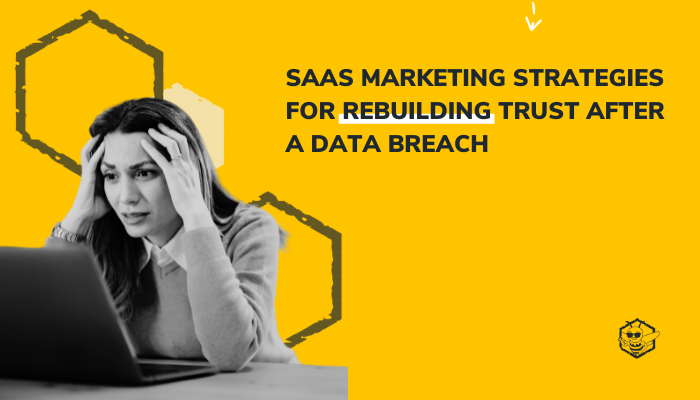Data breaches are every SaaS company’s worst nightmare – and for good reason. In 2024 alone, breaches surged by 490%, impacting over a billion individuals globally in the first half of the year. These incidents don’t just compromise data; they shatter customer trust, tarnish company reputations, and come with a hefty price tag. The average global cost of a data breach? A cool $4.88 million.
But here’s the thing: it’s not just the breach that defines your company—it’s how you respond. Brands like TransUnion and Target have shown that the right approach can not only rebuild trust but also turn a crisis into an opportunity to strengthen your reputation. Let’s dive into how SaaS companies can handle a data breach with clarity, empathy, and a game plan.
Table of Contents
The Immediate Aftermath: Time Is of the Essence
The first hours after a breach are crucial. The goal? Assess the damage and act decisively. Ask questions like:
-
What data was compromised?
-
How many customers were impacted?
Once you understand the scope, transparency is your new best friend. A whopping 78% of consumers say they trust brands that take proactive security measures and communicate openly during a breach. Don’t sugarcoat it—share what happened, outline the steps you’re taking to fix it, and provide actionable advice for customers.
Take a page from TransUnion’s playbook: after their breach, they offered affected customers free credit monitoring, empowering them to stay ahead of potential fraud.
Using Marketing as a Stabilizing Force
Marketing may not be the first thing on your mind during a data breach, but it’s a powerhouse for calming the storm. Start by creating a centralized communication hub on your website. This space can house updates, FAQs, and resources, giving customers the information they need—fast.
PR efforts are also key. Issuing a press release lets you control the narrative while showcasing proactive measures like upgrading security or offering support services. After its breach, Target launched a dedicated website and hotline to answer customer questions, demonstrating transparency and accessibility.
Lastly, don’t underestimate the power of empathy. Setting up dedicated hotlines or live chat channels shows customers that you’re not just addressing the breach—you’re addressing their concerns directly.
Rebuilding Trust and Reputation
Once the dust settles, it’s time to rebuild. Customers need to see visible, meaningful action to believe that their data is safe moving forward. Implementing multi-factor authentication, encryption upgrades, and partnerships with cybersecurity firms sends a clear message: you’re serious about security.
Your marketing team can help amplify this message. Consider a transparency-focused campaign featuring leadership discussing lessons learned or blog posts that detail new security measures. Humanizing your brand goes a long way in demonstrating accountability.
Customer feedback can also guide your efforts. Surveys or direct outreach not only help you identify ongoing concerns but also show customers that their opinions matter. When you listen, adapt, and act on feedback, you rebuild trust—one interaction at a time.
Long-Term Marketing Adjustments
A data breach may be a crisis, but it’s also an opportunity to evolve your brand. Here’s how to make long-term adjustments that position your company as resilient, transparent, and customer-focused:
1. Focus on Thought Leadership
-
Publish blogs, whitepapers, and guides on cybersecurity best practices.
-
Highlight your company’s commitment to data protection, positioning yourself as an industry leader.
2. Reframe Your Brand Narrative
-
Share stories of resilience, showing how the breach led to a stronger, more secure company.
-
Use case studies to highlight your recovery journey, proving that your brand walks the talk.
3. Monitor Brand Sentiment
-
Stay tuned to public perception with tools like Mention or Brandwatch.
-
Actively engage with your audience on social media to reinforce trust and answer questions.
These strategies keep your brand on the offense, ensuring you’re not just reacting to a breach but actively shaping your future.
Lessons from Companies That Got It Right
Need a little inspiration? Here are three companies that navigated breaches successfully:
-
TransUnion: Offered credit monitoring tools and resources to affected customers.
-
Target: Created a dedicated hub for updates and provided free credit monitoring.
-
T-Mobile: Swiftly neutralized a breach before significant damage occurred, proving the power of rapid response.
What’s the common thread? Transparency, proactive communication, and meaningful action. Take notes!
Moving Forward: A Marketing-Centric Recovery
Recovering from a data breach isn’t just about patching holes—it’s about building a stronger, more secure foundation for the future. With SaaS companies spending over 50% of revenue on sales and marketing, it’s critical to leverage these tools to restore trust and foster growth.
Act swiftly. Communicate transparently. Use marketing strategically. Because when done right, a breach isn’t the end of your story—it’s the start of a new, stronger chapter.
Need help navigating complex challenges like this? HIVE Strategy specializes in crafting marketing strategies that help SaaS companies thrive—even in tough times. Learn how we can support your brand on our Tech industry page.




.png?width=100&height=100&name=Why%20Were%20Not%20a%20Marketing%20Agency%20(And%20What%20That%20Means%20for%20Your%20Growth).png)
